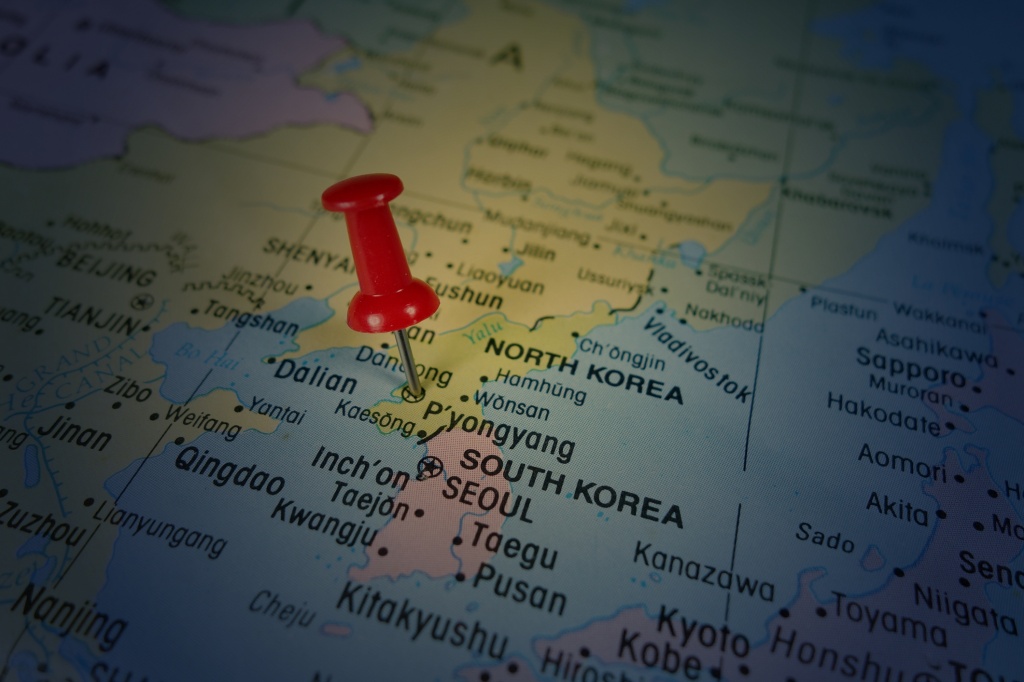長崎大学核兵器廃絶研究センター(RECNA)は、時宜に合ったテーマで、見解文(「RECNAの目」)を発表してまいりました。
このたび、1月21日の日米首脳テレビ会談の開催などの動きを受けて、岸田-バイデン外交についての見解をまとめ、広く発信することといたしました。
本文は こちら です。是非ご覧ください。
新着情報What’s New
長崎大学核兵器廃絶研究センター(RECNA)は、時宜に合ったテーマで、見解文(「RECNAの目」)を発表してまいりました。
このたび、1月21日の日米首脳テレビ会談の開催などの動きを受けて、岸田-バイデン外交についての見解をまとめ、広く発信することといたしました。
本文は こちら です。是非ご覧ください。
It is published simultaneously by RECNA-Nagasaki University, Asia Pacific Leadership Network for Nuclear Non-proliferation and Disarmament (APLN), and Nautilus Institute.

NUCLEAR WEAPONS AND DELIVERY SYSTEMS THAT MIGHT BE IMPLICATED IN NUCLEAR USE INVOLVING THE KOREAN PENINSULA
Matt Korda
Prepared for the
Project on Reducing the Risk of Nuclear Weapons Use
in Northeast Asia (NU-NEA)
Co-sponsored by
The Research Center for Nuclear Weapons Abolition, Nagasaki University (RECNA),
The Nautilus Institute for Security and Sustainability, and
The Asia-Pacific Leadership Network for Nuclear Non-Proliferation and Disarmament (APLN)
with cooperation of
Panel on Peace and Security of Northeast Asia
Additional funding by the MacArthur Foundation
January 20, 2022
It is highly unlikely that the Democratic People’s Republic of Korea (DPRK) would intentionally launch nuclear weapons in the absence of an existential threat to the continued survival of the state and its political leadership. However, in the event of such a scenario—for example, the prospect of an imminent US invasion or regime change operation—it is possible that the DPRK would use some of its estimated forty to fifty nuclear weapons in an attempt to forestall US action. In that case, the DPRK could use its short- and medium-range ballistic missiles early in a conflict to strike political and military targets in the Republic of Korea (ROK) and Japan, it and could potentially use its intermediate-range and intercontinental ballistic missiles to strike US military targets on Guam and Hawaii. The DPRK could also hold some nuclear weapons in reserve to strike the continental United States with intercontinental ballistic missiles, in the event that its initial nuclear strikes did not prevent an existentially threatening conventional invasion of the DPRK. First nuclear strikes by the United States (and its allies), or by China or Russia, may also be unlikely in the absence of an overwhelming provocation, but the nuclear weapons and launch systems available to these states are also considered.
Keywords:
DPRK, Nuclear Weapons, Delivery Systems, Nuclear-use Case, Korean Peninsula, United States
Authors’ Profile:
Matt Korda is a senior research associate and project manager for the Nuclear Information Project at the Federation of American Scientists, where he co-authors the Nuclear Notebook with Hans Kristensen. Matt is also an associate researcher with the Nuclear Disarmament, Arms Control and Non-proliferation Programme at the Stockholm International Peace Research Institute (SIPRI). Previously, he worked for the Arms Control, Disarmament, and WMD Non-Proliferation Centre at NATO HQ in Brussels. Matt received his MA in International Peace & Security from the Department of War Studies at King’s College London.
この特別論文は、「「北東アジアにおける核使用リスクの削減(NU-NEA)」プロジェクト– 二度と核兵器が使われないために –」のために執筆されたもので、RECNA、ノーチラス研究所、アジア太平洋核不拡散・軍縮ネットワーク(APLN)のウエブサイトに同時に公開されます。
朝鮮半島に使用される可能性がある核兵器及びその運搬システムについて
Matt KORDA
(要旨)
朝鮮民主主義人民共和国(北朝鮮)が、国家存亡の危機に面していない状況で、核兵器を意図的に使用する可能性は極めて低い。しかし、例えば米国が侵略する可能性や体制転換を迫る作戦が実施直前と認識されるような状況になると、米国の行動を抑止するために40~50発所有している(と推定される)核兵器を使用するかもしれない。その場合、紛争の初期の時点で、短・中距離弾道ミサイルを用いて韓国や日本に、または中距離・大陸間弾道ミサイルを用いてグアムやハワイ島の軍事目標に対して核攻撃を加える可能性がある。北朝鮮の存在を脅かすような米国の通常兵器攻撃を、最初の核攻撃が止められない場合に備えて、米国本土を目標にした大陸間弾道ミサイルを使用すべく数発の核兵器を保存しておくことも考えられる。(北朝鮮による)圧倒的な挑発でもない限り、米国(とその同盟国)、あるいは中国やロシア(も可能性がある)、による核兵器の先制使用も極めて可能性が低い。しかし、本論文ではそのような場合の核兵器運搬システムも検討した。
キーワード:北朝鮮(DPRK)、核兵器、運搬手段、核使用事例、朝鮮半島、米国
著者紹介: マット・コーダ博士は全米科学者同盟(FAS)核情報プロジェクトのプロジェクト・マネージャー兼上席研究員。FASの核情報プロジェクトでは、ハンス・クリステンセン博士と「核ノートブック」の共著者でもある。また、ストックホルム国際平和研究所(SIPRI)の核軍縮・軍備管理と核不拡散プログラムの准研究員でもある。それ以前には、北太平洋条約機構(NATO)ブリュッセル本部軍備管理・軍縮・大量破壊兵器不拡散センターにも勤務。英国キングス・カレッジ(ロンドン)の戦争研究学科で国際平和と安全保障修士号を取得している。
本論文の作成にあたっては、マッカーサー財団の助成金により一部支援をうけた。
英語版のみとなりますが、全文(PDF)は こちら からご覧いただけます。
◆本プロジェクトの概要は こちら
◆本プロジェクトの特別論文の一覧は こちら
この特別論文は、「「北東アジアにおける核使用リスクの削減(NU-NEA)」プロジェクト– 二度と核兵器が使われないために –」のために執筆されたもので、RECNA、ノーチラス研究所、アジア太平洋核不拡散・軍縮ネットワーク(APLN)のウエブサイトに同時に公開されます。
北東アジアにおけるミサイル防衛の役割
David Wright
(要旨)
本論文は、戦争時に朝鮮民主主義人民共和国(北朝鮮:DPRK)が攻撃用に使用するミサイルの型式を特定し、米国や同盟国の首脳陣や軍事司令官が、それらに対抗するミサイル防衛の効果を評価する際に検討しておかなければいけない不確実性について論じたものである。重要な結論は、ミサイル防衛はたしかにミサイル攻撃を一部は無効にすることができるが、ミサイル防衛の存在があっても北朝鮮はそれを上回る攻撃を行う選択肢を持つことになるだろう。そして、北朝鮮はどの選択肢が有効かも知ることになるだろう。もし、米国お予備その同盟国が、ミサイル防衛が米国や同盟国の市民を守る手段として有効である前提で防衛策を検討しているのであれば、この北朝鮮の選択肢の存在は死活的に重要な課題である。
キーワード:ミサイル防衛、核兵器使用、朝鮮民主主義人民共和国、米国、北東アジア
著者紹介: デビット・ライト博士は米マサチューセッツ工科大学(MIT)「核セキュリティと政策のための核科学・工学研究所 」准研究員。1992年から2020年まで、「憂慮する科学者同盟(UCS)」のグローバル・セキュリティ・プログラムの研究員で、2002から20年までは同プログラムの共同ディレクターを務めた。それ以前には、MITの
軍備管理・安全保障研究プログラムやハーバード大学ケネディスクールの科学と国際関係研究センター、および全米科学者同盟(FAS)の研究員も務めた。1983年にコーネル大学から物理学博士号取得。88年までコーネル大学で物理学研究員として勤務していた。
本論文の作成にあたっては、プリンストン大学科学とグローバル安全保障プログラムの助成金により一部支援をうけた。
英語版のみとなりますが、全文(PDF)は こちら からご覧いただけます。
◆本プロジェクトの概要は こちら
◆本プロジェクトの特別論文の一覧は こちら
It is published simultaneously by RECNA-Nagasaki University, Asia Pacific Leadership Network for Nuclear Non-proliferation and Disarmament (APLN), and Nautilus Institute.

THE ROLE OF MISSILE DEFENSE IN NORTH-EAST ASIA
David Wright
Prepared for the
Project on Reducing the Risk of Nuclear Weapons Use
in Northeast Asia (NU-NEA)
Co-sponsored by
The Research Center for Nuclear Weapons Abolition, Nagasaki University (RECNA),
The Nautilus Institute for Security and Sustainability, and
The Asia-Pacific Leadership Network for Nuclear Non-Proliferation and Disarmament (APLN)
with cooperation of
Panel on Peace and Security of Northeast Asia
Additional funding by the MacArthur Foundation
January 12, 2022
This paper discusses specific types of missile attacks the Democratic People’s Republic of Korea (DPRK) might launch in a conflict and identifies the key sources of uncertainty that US and allied political and military leaders must take into account in assessing how effective defense systems might be in stopping these attacks. A key finding is that while missile defenses might be able to blunt some kinds of attacks, the DPRK will have options for retaliatory missile attacks that can reach their targets despite the presence of defenses, and Pyongyang will know which options those are. The existence of this second set of cases is crucial for US and allied leaders to recognize if they are considering taking actions under the assumption that defenses will be effective in protecting US and allied populations.
Keywords:
Missile Defense, Nuclear-weapon Use, DPRK, United States, Northeast Asia
Authors’ Profile:

David Wright is a research affiliate in the MIT Department of Nuclear Science and Engineering’s Laboratory for Nuclear Security and Policy. From 1992 to 2020 he was a researcher with the Global Security Program at the Union of Concerned Scientists, serving as co-director of the program from 2002 to 2020. Previously he held research positions in the Defense and Arms Control/Security Studies Program at MIT, the Center for Science and International Affairs at Harvard’s Kennedy School of Government, and the Federation of American Scientists. He received his PhD in theoretical condensed matter physics from Cornell University in 1983 and worked as a research physicist until 1988.
This work was supported in part by the Program on Science and Global Security, Princeton University.